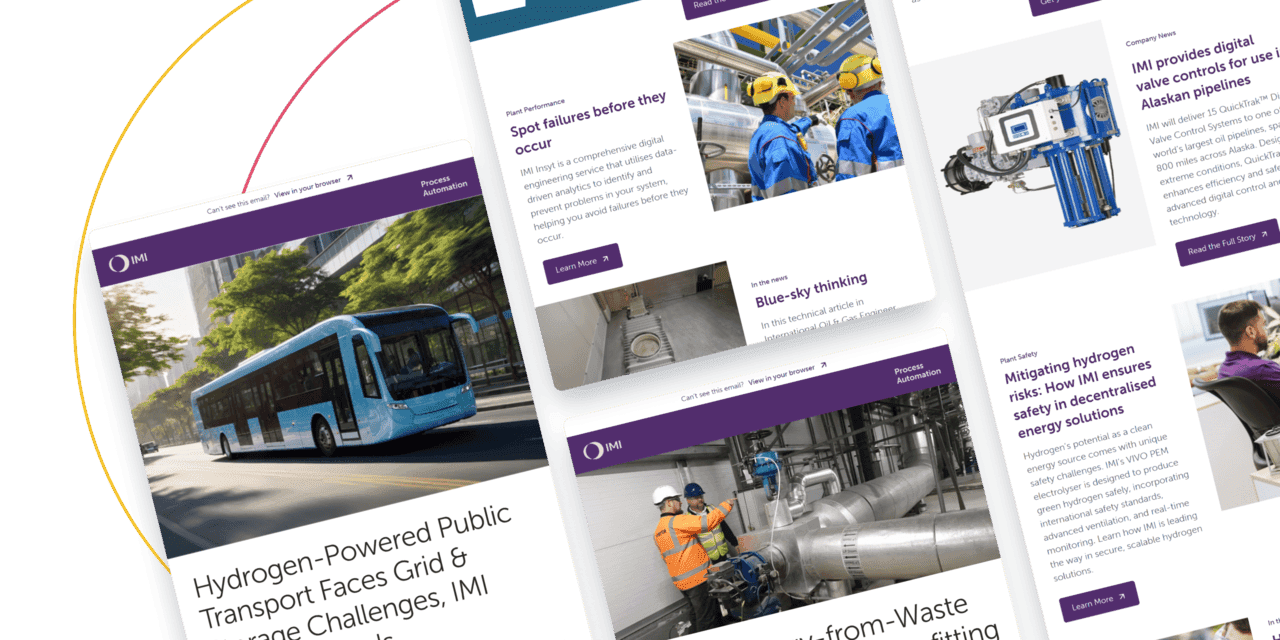Organization Sectors
Organization Sectors
Stay up to date on all the latest Process Automation news
© 2025 IMI plc, All Rights Reserved
© 2025 IMI plc, All Rights Reserved
BLOG

Written By IMI Publications
August 4, 2025
Historically, Rising Stem Ball Valves (RSBVs) have been the go-to solution for these applications. But as operators face mounting pressure to reduce downtime, cut costs, and improve reliability, the limitations of RSBVs are becoming hard to ignore. Fortunately, high-performance alternatives are emerging.
Why valve performance matters in LNG dehydration
To safely and efficiently liquefy natural gas, moisture must be removed before cooling. Water in the system can freeze during liquefaction, causing serious damage to pipes and other infrastructure. This is where molecular sieve systems come in, using solid catalysts to absorb moisture as gas passes through.
Valves at the top and bottom of the dehydration towers control the thermal cycling process, alternating between purification and regeneration phases. These valves must handle:
Frequent cycling (up to 3–4 times daily)
Abrasive media from catalyst particles
High temperature swings (ambient to 350°C)
Any failure in valve performance can cause process interruptions, expensive maintenance, and costly downtime. In one high-profile case reported by Reuters, unplanned LNG plant outages in 2022 led to losses reaching hundreds of millions of dollars.

Two technicians in PPE examine a suspended C-Rex valve in an industrial environment. One holds technical drawings while the other handles the valve. The environment includes structural steel and overhead lifting equipment, consistent with heavy industrial applications.
The Case for Moving Beyond Rising Stem Ball Valves
RSBVs have served the LNG industry well, but their drawbacks are becoming more apparent:
Complex and costly maintenance: Replacing trim components like the stem can be expensive - sometimes costlier than a full valve replacement.
Heavy footprint: Their weight adds to installation and shipping costs, particularly in offshore and space-constrained environments.
Wear and emissions: High shaft friction and potential for abrasive media intrusion can cause performance degradation and increased emissions.
Limited lifecycle: Thermal cycling and abrasive conditions accelerate wear on sealing surfaces, reducing service life.
As a result, LNG operators are exploring more cost-effective, compact, and low-maintenance alternatives that meet or exceed the performance of RSBVs.
Smarter Valve Solutions: Alternatives That Deliver
1. Double Eccentric Segmented Ball Valve – C-REX™
IMI’s C-REX™ valve is engineered to thrive in severe service applications like molecular sieve switching. Key features include:
Non-rubbing, low-torque operation with metal seated, hard-faced surfaces
Compact, lightweight design—up to 50% lighter than traditional RSBVs
Quarter-turn operation for easier automation and reduced emissions
Top-entry design for straightforward inline maintenance
Cavity-free architecture, eliminating the risk of over-pressurised cavities
With fast and effective maintenance, the C-REX™ helps minimise operational disruption and long-term cost.
2. Triple Eccentric Butterfly Valve – MV Series
IMI’s MV Series triple eccentric valve is another high-performance alternative designed for tight shutoff and low maintenance:
Non-rubbing metal seat design ensures long-term tightness
Compact and lightweight, particularly advantageous in valve sizes above 10"
Full metal construction with a one-piece shaft and disc arrangement
Enhanced durability through special bushings that resist abrasive and polymeric media
This valve’s resilience and serviceability make it ideal for operators focused on long-term value and performance.
Key criteria for specifying valves in LNG dehydration
When choosing valves for molecular sieve service, engineers should prioritise:
Cavity-free design to prevent catalyst particle entrapment
Metallic hard-faced seats and bushings to resist abrasion
Quarter-turn operation for improved reliability and lower emissions
Material selection and thermal expansion tolerances to accommodate high thermal cycling
Making the switch
A growing number of LNG facilities are already transitioning to next-generation valve technologies. These facilities are seeing:
Reduced unplanned downtime
Lower operational and maintenance costs
Improved lifecycle performance
If your operation still relies on Rising Stem Ball Valves, now is the time to re-evaluate.
Stay up to date on all the latest news and articles from IMI.

Stay up to date on all the latest news and articles from IMI.


Stay up to date on all the latest news and articles from IMI.
